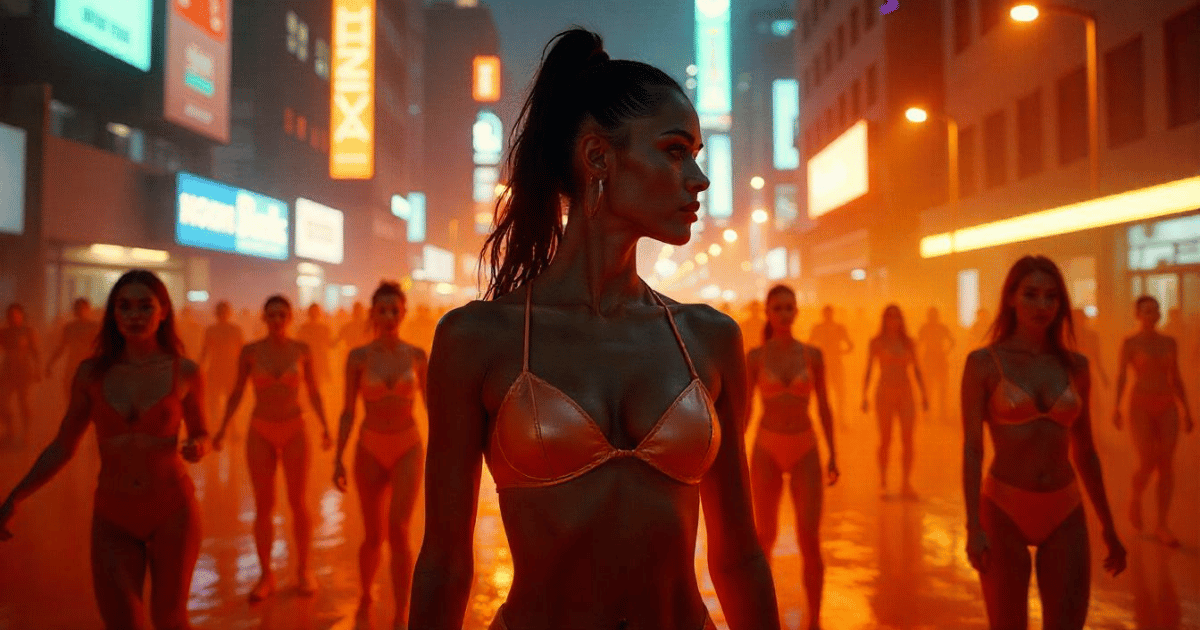Introduction — Why Branding Matters More Than Ever in Hip-Hop
In 2025, skill alone isn’t enough. You could drop flawless bars, intricate rhyme schemes, and punchlines that snap necks — but without a strong brand, you’ll blend into the noise. The streaming era flattened the playing field: an unknown rapper in Lagos can upload a track tonight and hit a global playlist tomorrow. Attention is abundant; trust is scarce. Your brand earns the trust.
The artists who win don’t just rap — they communicate a lifestyle, a point of view, and a set of values fans can feel. Branding isn’t about logos; it’s about identity, cultural credibility, and consistency. This guide gives you a practical, modern blueprint to build an authentic hip-hop brand that resonates with fans and unlocks real opportunities, from shows and sync deals to sponsorships and superfans.
Related: The Ultimate Guide to Monetizing Your Rap Career in 2025
Step 1 — Define Your Artistic Identity
Find Your Voice and Core Message
Before visuals or merch comes the message. Ask yourself:
- What am I saying with my music — and why?
- Who am I speaking to? (Be specific: the more niche, the easier to win.)
- What emotions and imagery define my world?
Boil it down to a single positioning sentence: “I’m a [subgenre/role] who tells [theme/story] for [audience] with [signature sound/visual].” That line becomes the north star for covers, captions, videos, stage design, and collaborations.
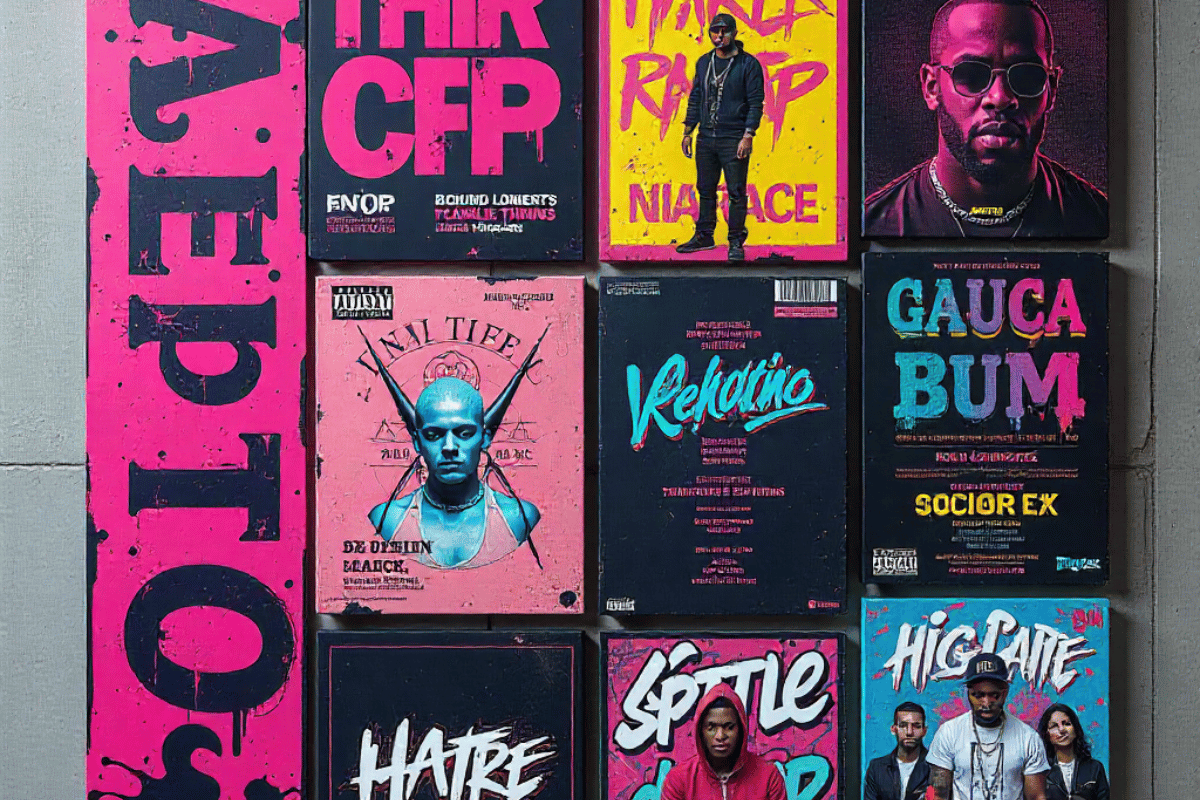
Choose a Visual Aesthetic That Matches Your Sound
Fans should recognize you in two seconds — from a thumbnail, flyer, or Spotify canvas. Some working aesthetics:
- Trap: High-contrast street photography, neon edge, kinetic edits.
- Lo-Fi Hip-Hop: Muted palettes, analog textures, illustrated covers.
- Conscious Rap: Minimalist typography, documentary-style photos, symbolism.
Keep a mood board. Use 2–3 primary colors, 1–2 typefaces, and repeat them everywhere to build recall.
Subgenre-Specific Identity Tips
- Trap: Streetwear collaborations, city landmarks, night-time lighting.
- Lo-Fi: Cozy scenes, lo-res overlays, anime/retro influences.
- Conscious: Strong copywriting, clear messaging, archival references.
Step 2 — Build Credibility in the Culture
Engage with Your Scene (Online & Offline)
Hip-hop is a culture before it’s an industry. Earn your stripes by contributing. Show up to open mics and cyphers, volunteer skills (hooks, mixing, visuals) for genuine collaborators, and support other artists’ shows. Capture moments smartly: short, well-lit clips with captions travel farther than grainy 2-minute uploads.
Related: Best Hip-Hop Open Mics in New York City
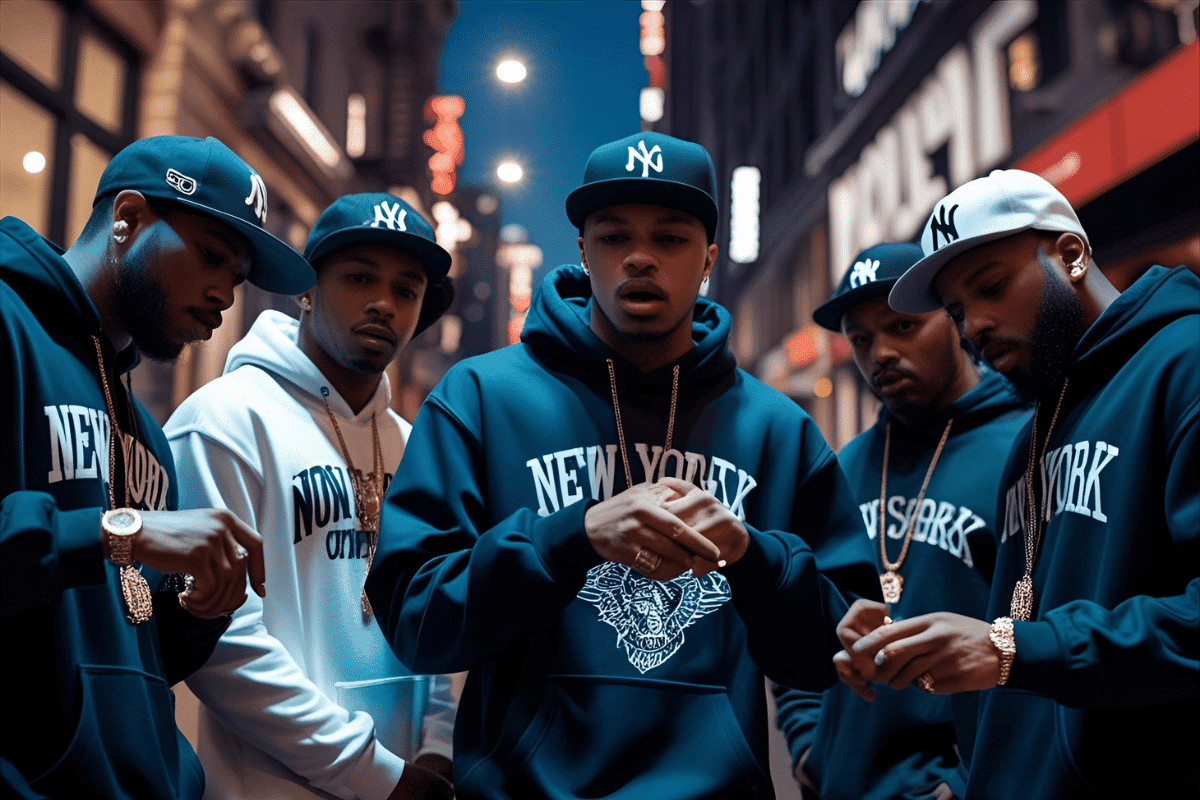
Collaborate With Artists Who Align With Your Brand
Features can multiply reach — or muddle your identity. Choose collaborators with overlapping audiences and compatible aesthetics. Map it: if your brand pillars are storytelling, soulful samples, community, your collab should reinforce at least two of those three.
Respect the Roots While Evolving the Sound
Innovation lands when fans trust you know the lineage. Name influences in interviews, weave references into videos, and credit producers and filmmakers publicly. Integrity builds authority.
Step 3 — Create a Consistent Online Presence
Master Your Social Media Storytelling
Every post should do one job: entertain, educate, inspire, or deepen connection. Platform-specific ideas:
- TikTok: 15–30s choruses, duet prompts, crowd reactions, “mic check” sound tests.
- Instagram: Reels of performance snippets, carousel lyric breakdowns, mood-board slides.
- YouTube: 6–10 minute studio vlogs, beat breakdowns, “how this song happened.”
Related: The Ultimate Guide to TikTok SEO for Rappers in 2025
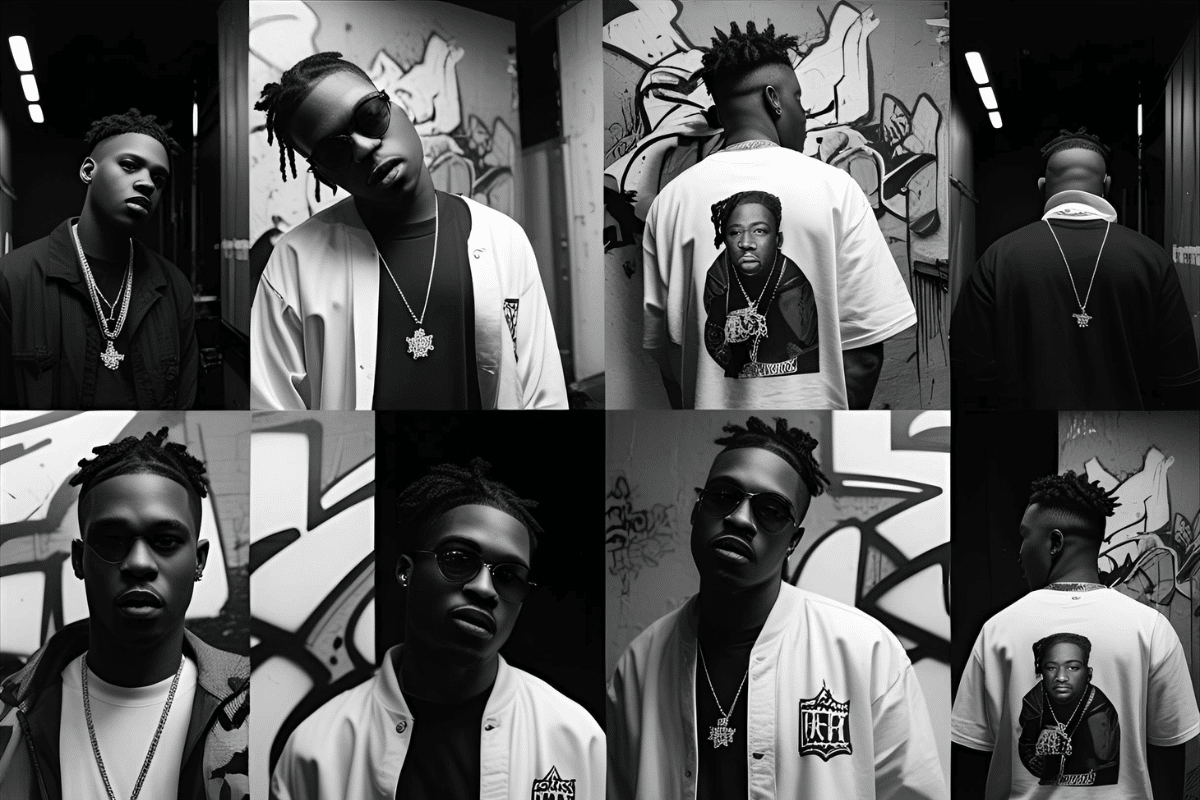
Control Your Narrative Through Owned Platforms
Algorithms change; your site and email list don’t. Publish song pages with embedded players, lyrics, credits, and behind-the-scenes notes. Send a monthly newsletter with unreleased demos, early tour dates, and discount codes for superfans.
Use AI Tools to Enhance Output Without Losing Soul
Accelerate the boring parts: mastering, stem splitting, video cuts, and social crops — then spend your time on direction and performance. Keep your sound consistent across releases.
- Best AI Tools for Rappers & Producers in 2025
- The Definitive Guide to AI Mastering in 2025
- The Ultimate Guide to LUFS (Loudness Units Full Scale)
Step 4 — Merchandise as a Branding Weapon
Why Merch is More Than Just T-Shirts
Merch turns casual listeners into visible advocates. Think beyond hoodies: lyric-engraved rings, city-map posters tied to a tour, cassette USBs with bonus demos, sticker sheets for laptop culture. Design from the story out — not the SKU in.

Align Merch Design With Your Story
Launch themed capsules per release. If your EP centers on your block, incorporate local typography, bus route numbers, or neighborhood coordinates. Include a short story card in each order to make it feel collectible.
Create Scarcity to Build Hype
Use limited windows (72-hour drops) and numbered items. Offer bundle tiers (digital + tee, vinyl + crewneck, “backstage” pack with a listening party Zoom). Scarcity creates urgency — just ensure quality holds up so you earn repeat buyers.
Related: Merch Kit for Independent Rappers
Step 5 — Protect & Monetize Your Brand
Trademarking Your Name and Logo
Register artist name, logo, and signature phrases in target markets early. It’s cheaper than disputes later. Keep a clean paper trail for collaborators and split sheets.
Register Your Music & Royalties Properly
Sign up with your PRO and neighboring rights orgs, and make sure your distributor metadata is flawless (ISRCs, contributors, lyrics). Proper metadata = money actually paid to you.
Related: Copyright & Contracts Essentials for Rap Artists in 2025
Diversify Revenue Streams Without Diluting Authenticity
Live shows, direct fan subscriptions, sample packs, writing camps, sync licensing, and aligned brand partnerships can stack nicely. Gatekeep your image: if it doesn’t fit your story, skip it.
The Role of Live Performance in Brand Building
Stagecraft is brandcraft. A tight 15-minute set can do more for brand perception than a month of posts. Treat shows like product releases: rehearse transitions, write a mini-script, and design a visual moment fans can film (call-and-response line, coordinated phone lights, a surprise guest).
- Set design: One signature prop or backdrop repeated across gigs (neon sign, banner, or LED word mark).
- Fan rituals: A chant, hand sign, or phrase that becomes your audience’s identity marker.
- Post-show capture: QR code to a landing page with setlist, photos, and email signup; offer a discount code for 24 hours.
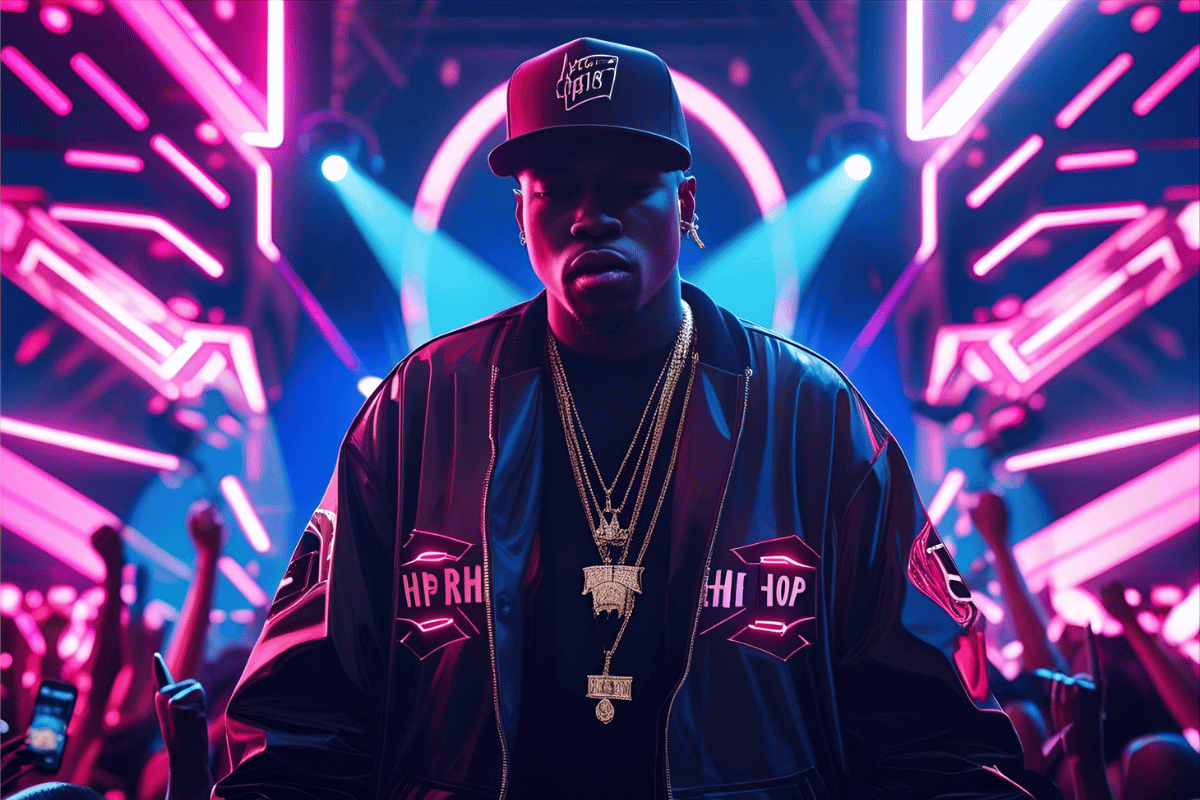
Avoiding Common Branding Mistakes in Hip-Hop
- Copy-paste aesthetics: Looking like every other artist in your lane. Borrow influence, but remix it through your story.
- Inconsistent audio quality: Single sounds huge, follow-up sounds flat. Keep loudness, tone, and dynamics consistent across releases. Learn LUFS and pick a mastering approach you can repeat.
- Messy typography: Five fonts across posts screams amateur. Lock two fonts and stick to them.
- Random collaborations: A feature that doesn’t match your values confuses fans and the algorithm.
- Over-posting without a narrative: Volume isn’t story. Build arcs (studio → snippet → release → live moment → behind-the-scenes → fan duet).
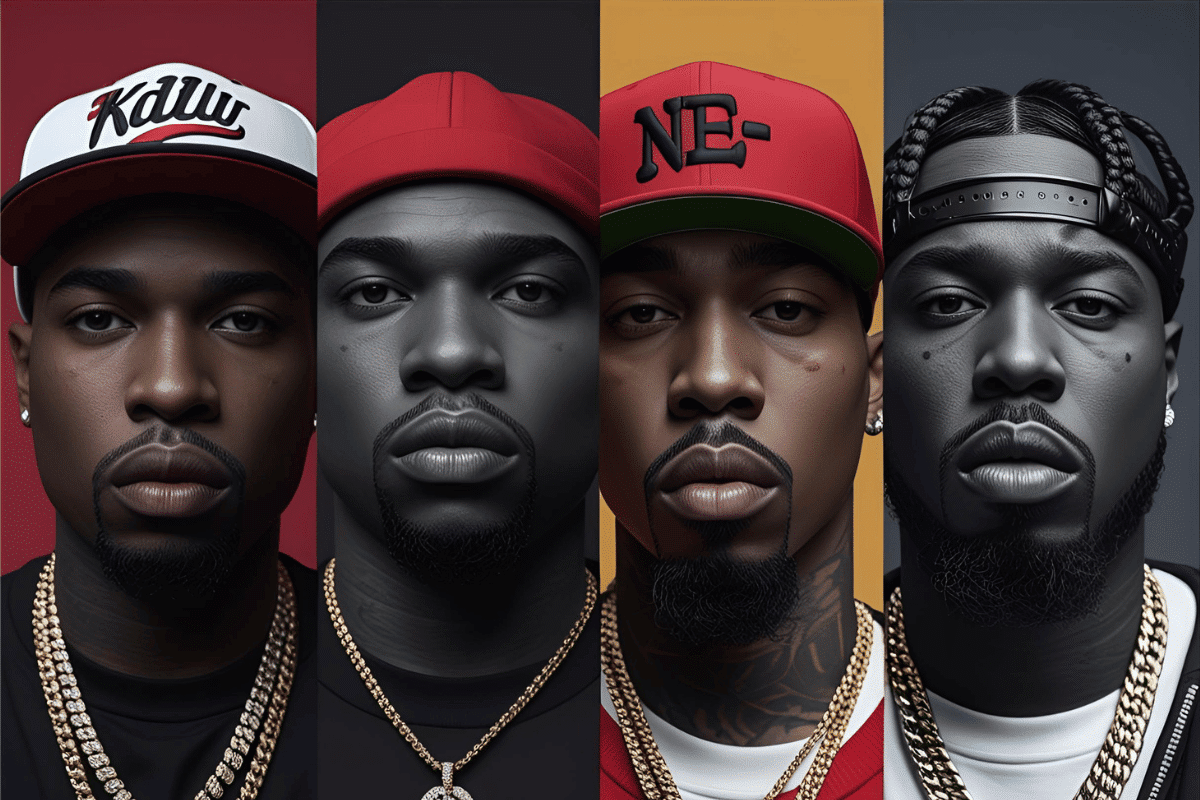
Build a 30-Day Content Calendar (Copy & Paste)
Here’s a simple structure you can repeat monthly. Batch record in a single afternoon.
- Week 1: Tease the hook (3 angles), studio B-roll, cover art reveal.
- Week 2: Bars-in-car snippet, producer breakdown (30–60s), lyric carousel.
- Week 3: Live rehearsal clip, duet challenge prompt, fan Q&A replies.
- Week 4: Release moment, behind-the-scenes recap, thank-you video + newsletter drop.
Daily cadence: 1 short (Reel/TikTok) + 1 story + 2–3 comments on fan posts. Ship consistently > perfectly.
Measure What Matters (Brand Analytics Primer)
Forget vanity metrics. Track signals that reflect brand depth:
- Save Rate (IG/TikTok): % of viewers who save — indicates replay value and narrative depth.
- Comment Quality: Are fans quoting lines, asking questions, or tagging friends?
- Email Growth: Owned audience beats fluctuating reach.
- Returning Listeners (DSPs): Shows if you’re building habit, not hype.
- Merch Conversion: Visitors → add to cart → purchase. Small but steady > spikes with refunds.
Run monthly retros: what content drove the most saves and replies? Double down on those story formats next month.
Brand Partnerships Without Selling Out (Checklist)
Before you accept a bag, run this quick test:
- Audience Fit: Would your core fans actually use this product?
- Story Fit: Can you tie the collab to your narrative (city, upbringing, sound)?
- Creative Control: Do you choose visuals and copy?
- Exclusivity Window: Avoid long lock-ins that block better deals later.
- Deliverables vs. Fee: Do the math on production costs and opportunity costs.
Case Studies — Artists Who Mastered Authentic Branding
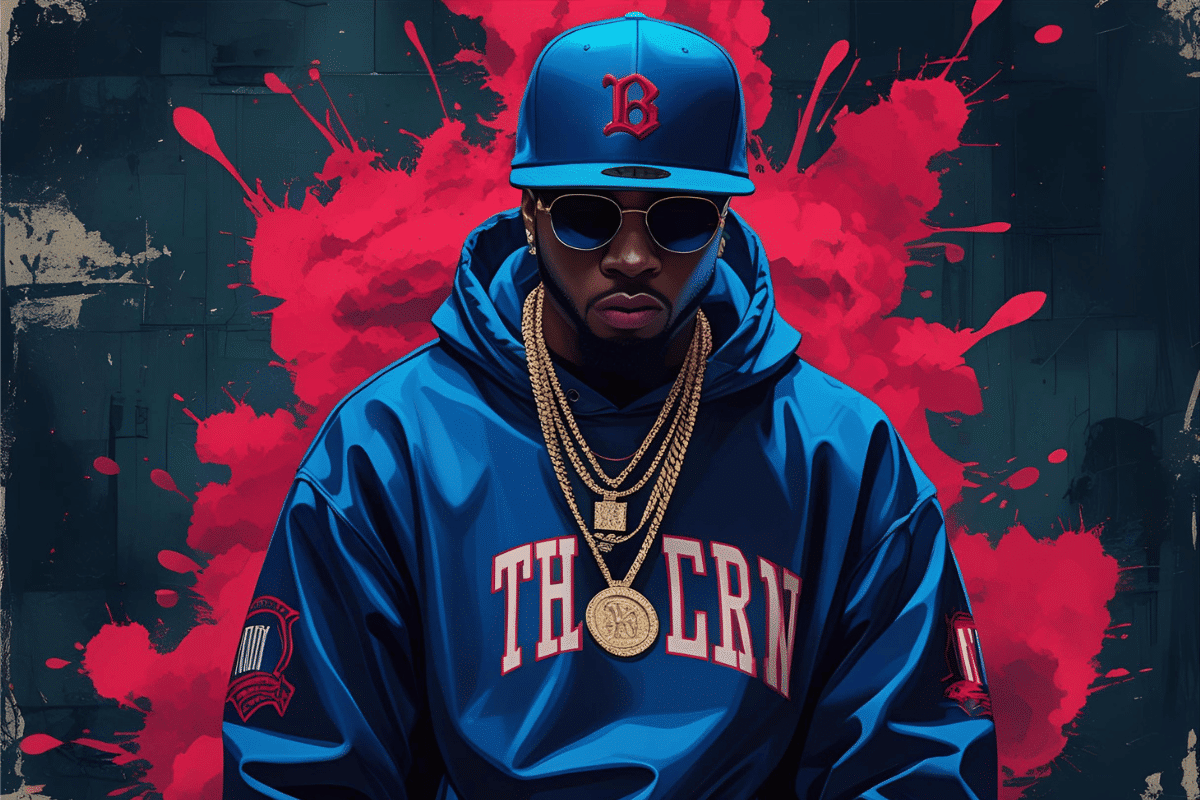
Case Study 1: The Underground MC Who Went Global
Positioning: Gritty narrative rap with cinematic visuals. Strategy: Every single arrived with a 90-second mini-doc filmed on the artist’s block, a typed letter scanned into the cover, and a consistent serif/sans type pair. Execution: Weekly 30-second monologues on IG (“chapters”) kept the story moving between releases. Results: From 300 to 1.2M monthly listeners in 18 months, sold-out 800-cap venues in three cities, and a short-film grant based on the doc series.
Case Study 2: The Lo-Fi Streaming Specialist
Positioning: Study/relax flows with anime-inspired visuals. Strategy: Ten-song releases every quarter with consistent canvas loops, collabs with illustrators, and midnight releases timed to study seasons. Execution: YouTube livestream of “writing with rain,” and Discord lyric clubs. Results: $8K/month across DSPs, 35% save rate on core tracks, and limited-run vinyls selling out in 48 hours.
Case Study 3: The Viral Trap Artist With Staying Power
Positioning: High-energy bass records with crowd-chant hooks. Strategy: Turn a 14M-view TikTok freestyle into a brand: hook becomes a rallying cry on tees, phone-wallpaper freebies, and a call-and-response moment live. Execution: Built an email list with a “thank-you pack” (stems + acapella). Results: 40K+ subscribers, 2X repeat merch buyers, and a beverage sponsor for a regional tour.
Final Takeaways — Your Brand is Your Legacy
- Define your identity before the internet does it for you.
- Earn cultural credibility online and in real rooms.
- Make consistency your superpower — in visuals, voice, and sound.
- Treat merch like art, not leftovers.
- Protect your IP and diversify your income with intention.
“Your brand is the vessel. The music is what fills it. If the vessel leaks, you’ll lose it all.” — Independent Artist Interview, BeatsToRapOn Creator Network, 2025
Start today — and connect with collaborators inside the BeatsToRapOn Creator Network to help elevate your vision. For the technical side of your brand’s sound, explore our guides on AI Mastering, LUFS & loudness, and AI tools for creators.
